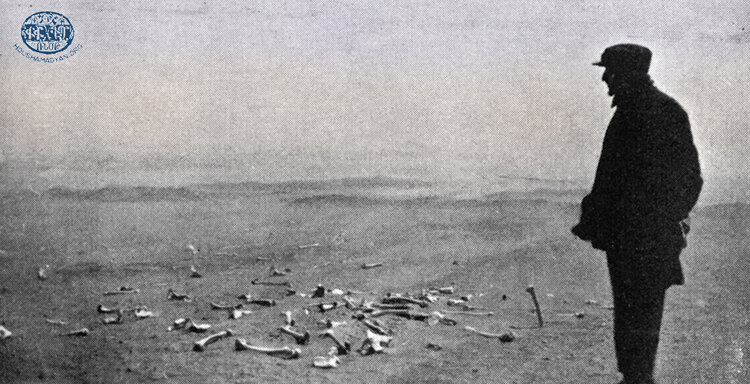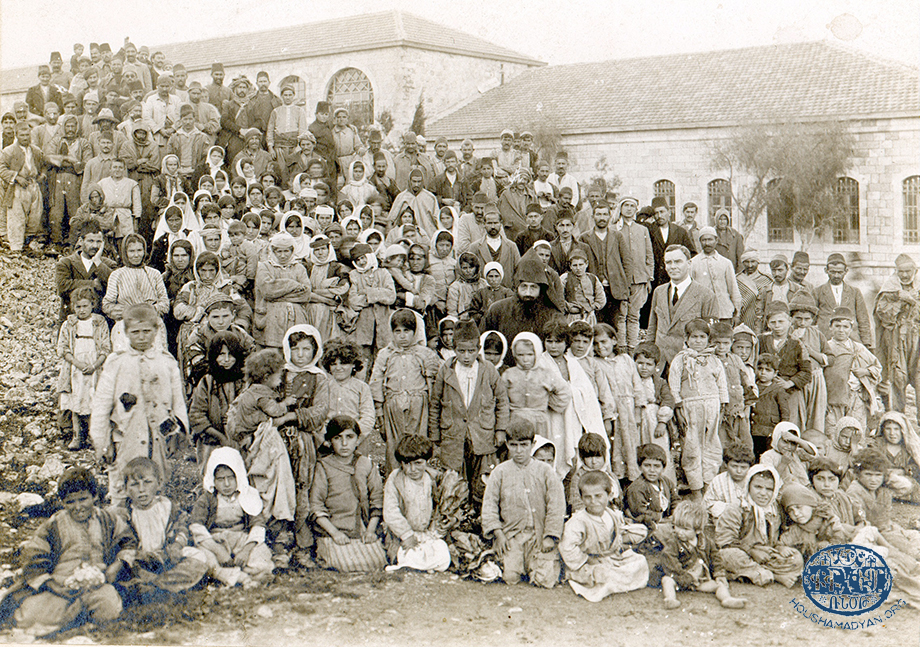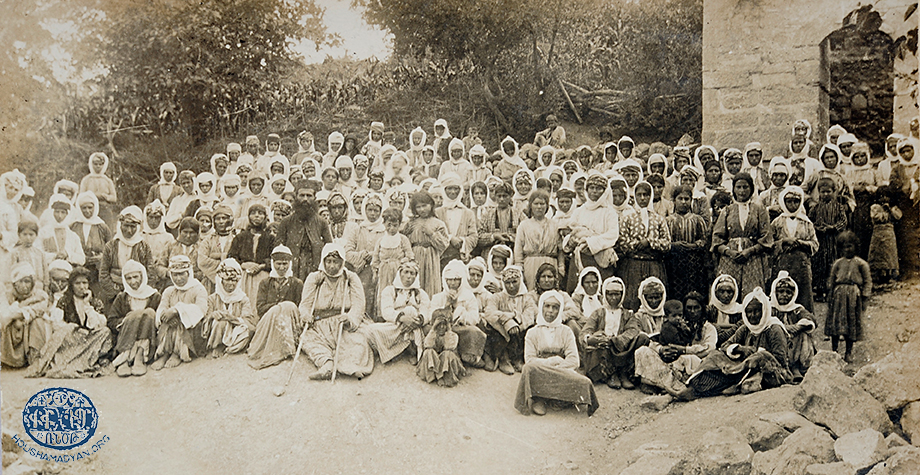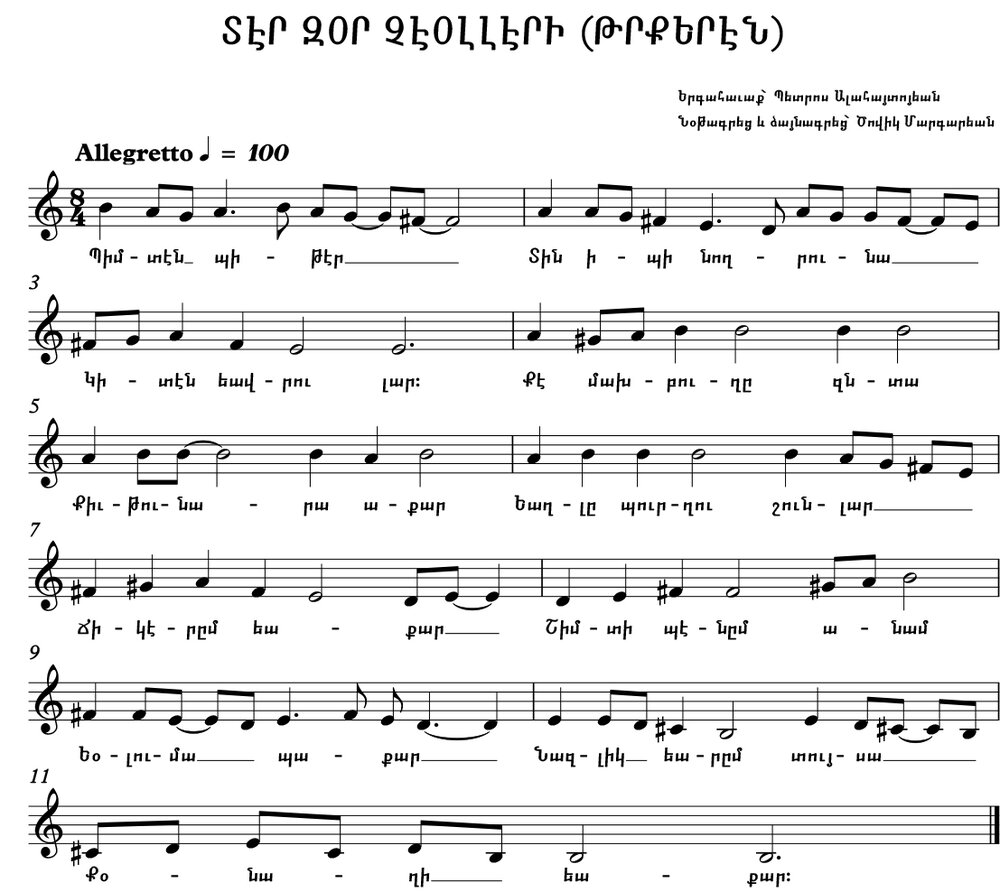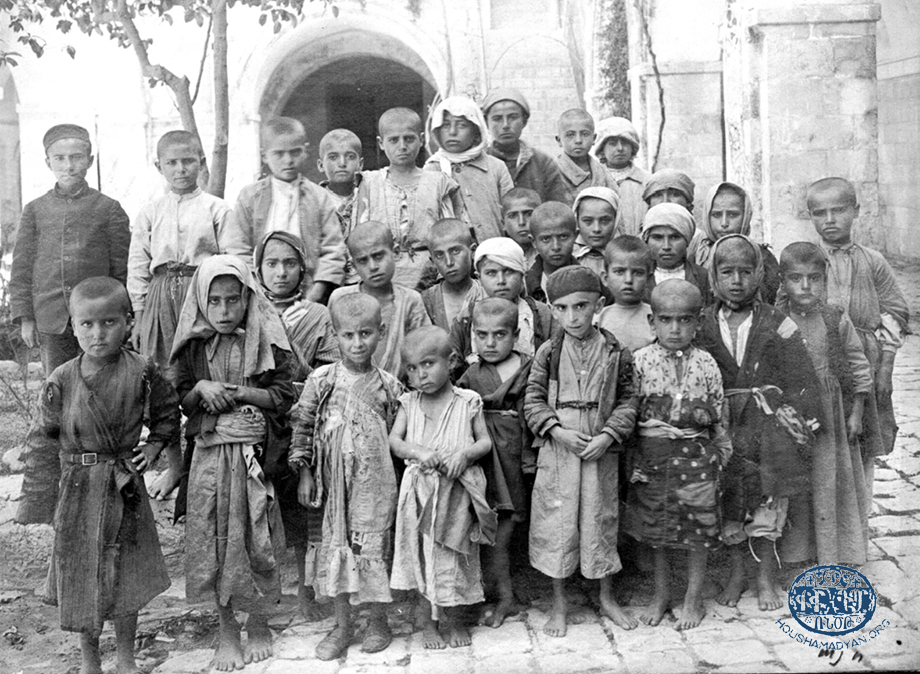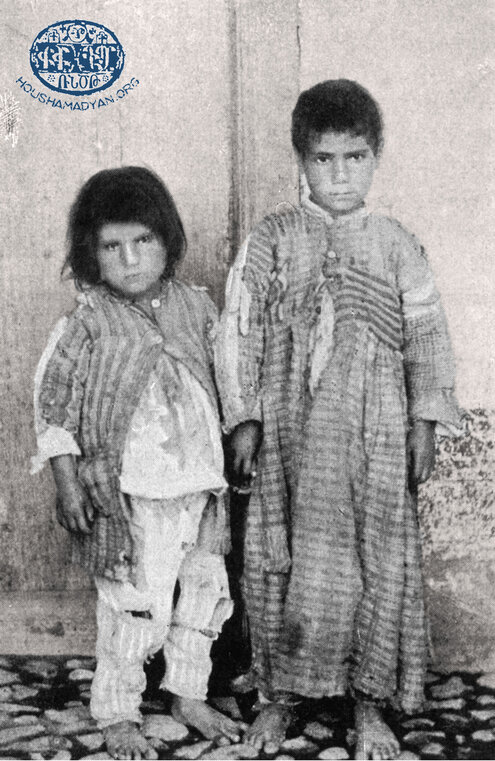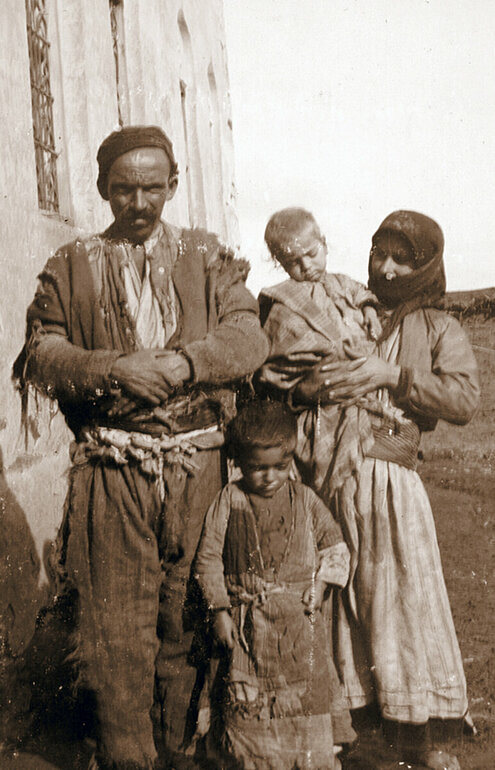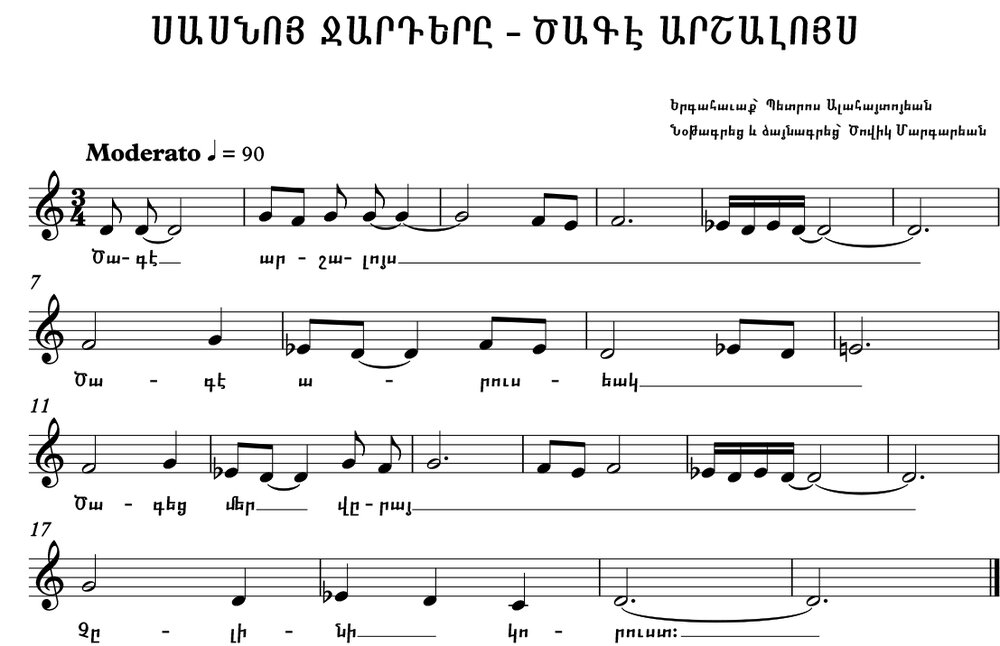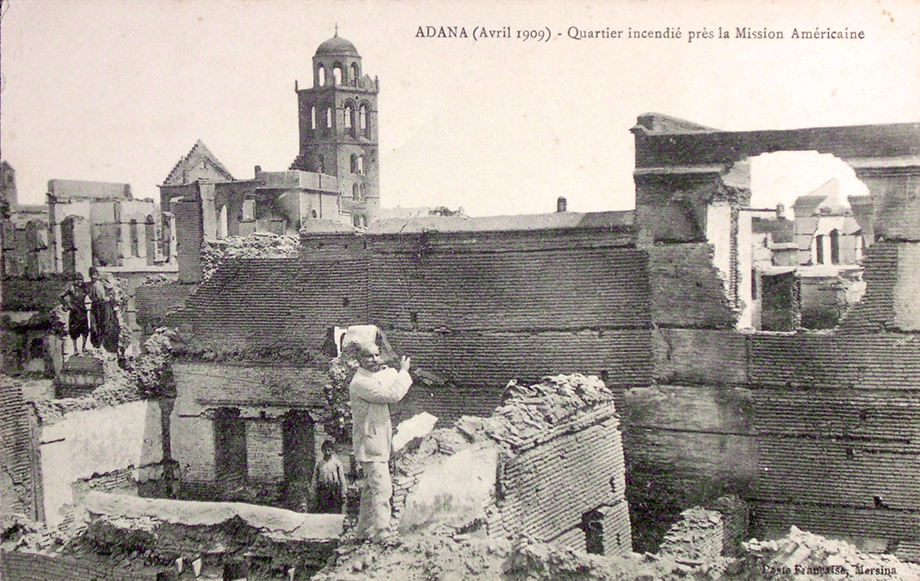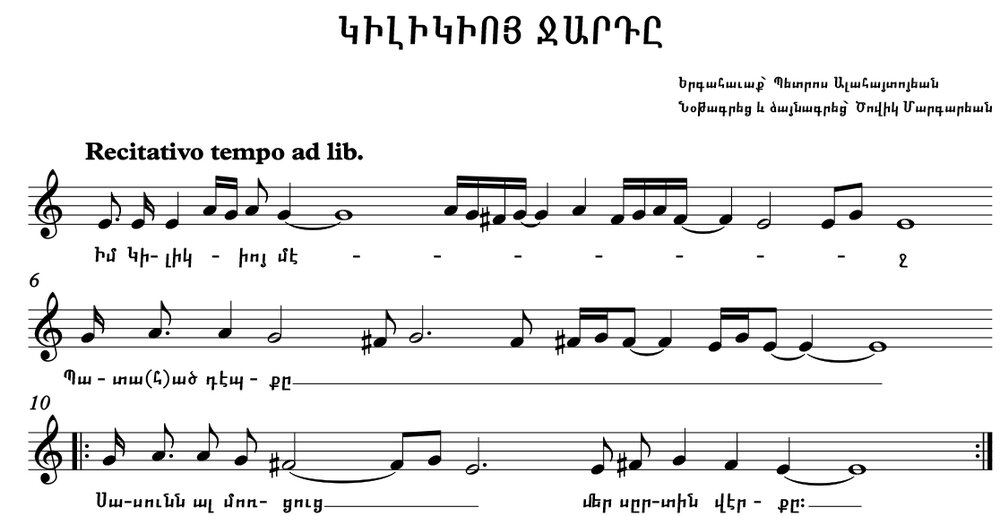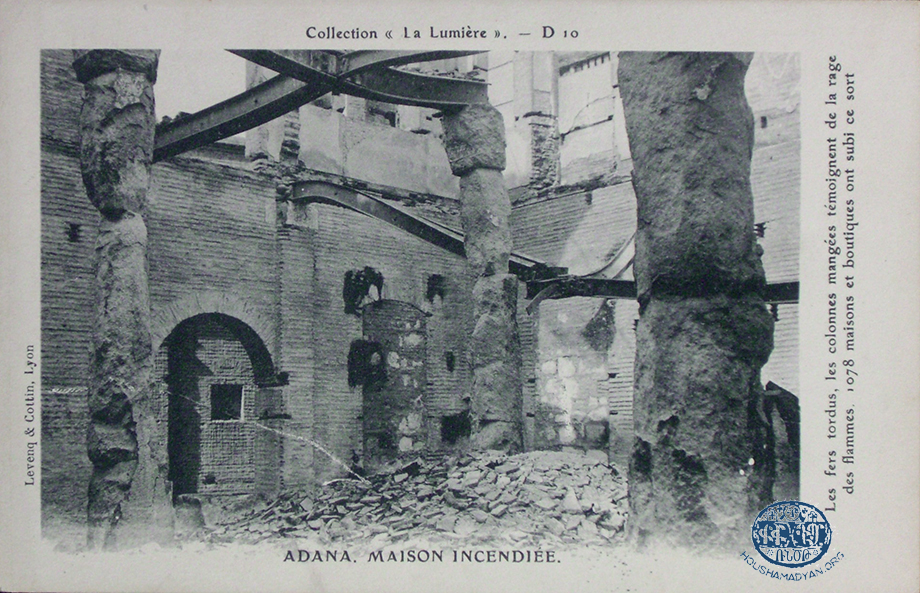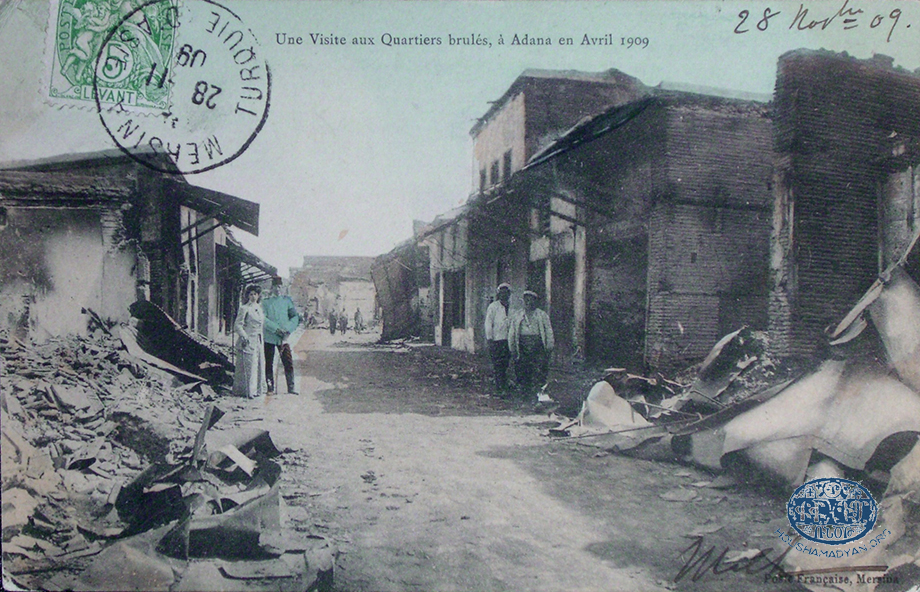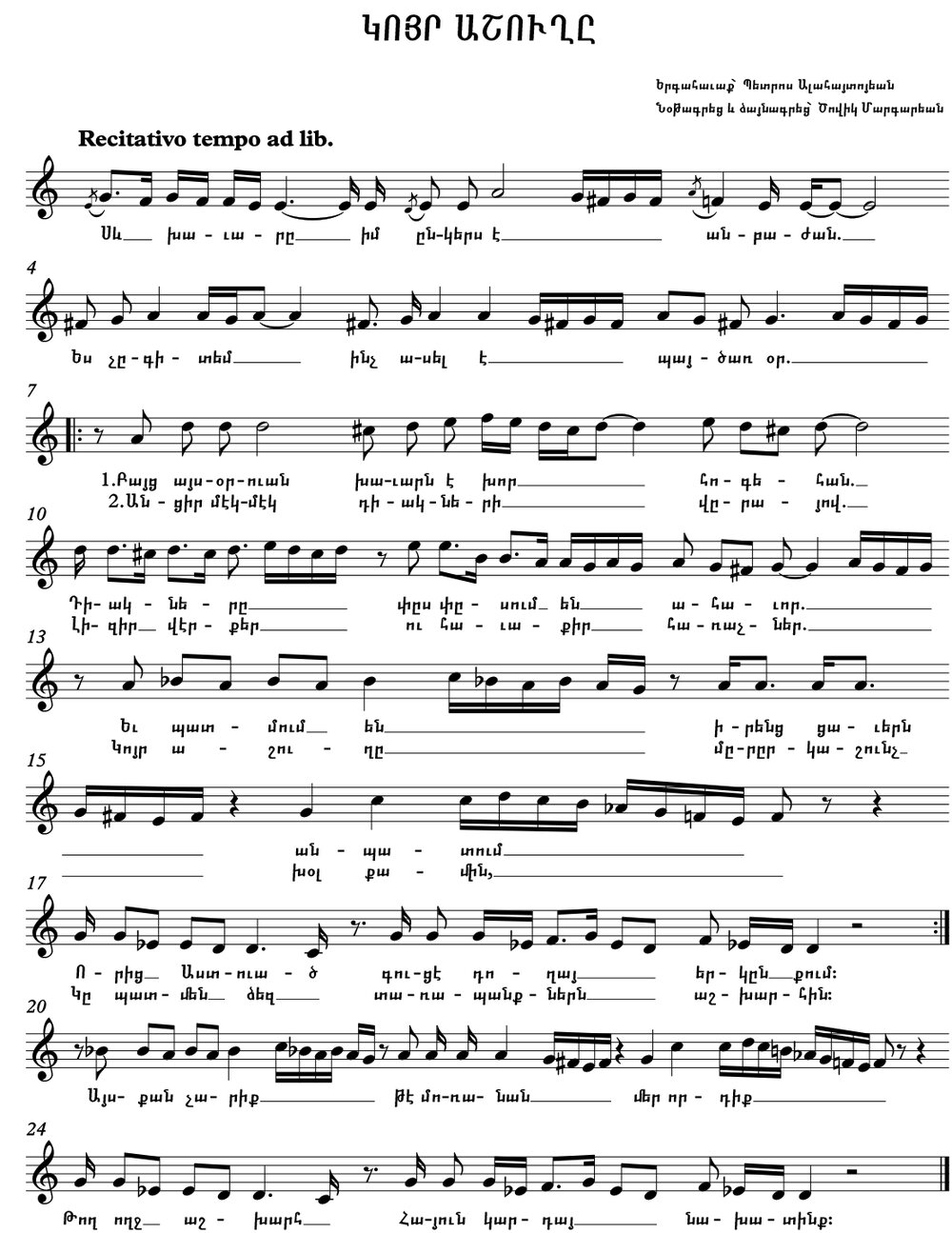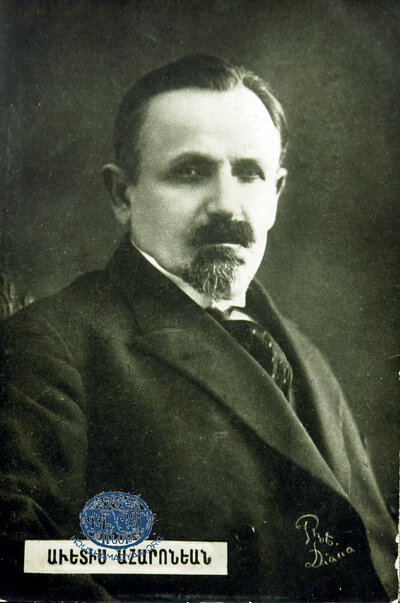Bedros Alahaidoyan Coll. | Songs of Lamentation
This page presents songs and dance music collected and recorded by musicologist Bedros Alahaidoyan. Beginning in the 1980s, Mr. Alahaidoyan traveled to cities and towns populated by Armenians throughout the Diaspora, in search for Genocide survivors from whom he collected rare songs and anecdotes of their native cities and villages.
Editing of this page, as well as music engraving and digitization, provided by Dzovig Markarian, DMA. Translation: Simon Beugekian.

Songs of Lamentation
Author: Bedros Alahaidoyan
It is true that this anthology, unlike my other collections, does not observe Houshamadyan’s requirement of geographic categorization. However, this collection of songs uniquely depicts the innumerable, ruthless acts of violence committed during the years of the Genocide and before.
The five songs presented here describe the deserts of Der Zor through the eyes of a blind minstrel, as well as the massacres of Sassoun and Cilicia. The collection ends with a poem that goes beyond personal experiences and collective suffering, and relays a terrible warning to future generations from the pen of the poet Avedis Aharonian.
After collecting songs for ten years, when I was reviewing my collection, I noticed that these five songs, put together, constituted an arc. The tales of two years of ceaseless massacres and of the soul-wrenching despair experienced in the sands of Der Zor have been preserved and etched into history in the form of songs that were either composed by survivors themselves, or were based on the their testimonies.
On the one hand we have a blind minstrel, who listens to the dards [woes] of the caravans passing through Der Zor, and then sings these woes. His song was essentially written for him by the members of the caravans of death.
On the other hand, after the massacres in Sassoun, the people sang of a new dawn, as if they refused to believe that a whole nation could be slaughtered… And ultimately, we have the curse of the poet, placed upon future generations that dare forget the state-sponsored crimes committed against their ancestors.
A few notes on the vocalists
Sarkis Boghosian was born in Malatya. After surviving the Genocide, he initially settled down in France with his family, where he learned this song. Thereafter, he migrated to Fresno, and bequeathed his wealth to the Armenian Apostolic Church. He heard and learned the Der Zor Cheolleri from others. He met Bedros Alahaydoyan and recorded this performance in the Armenian nursing home in Fresno, in 1986.
“Mayrig” Ghambarian survived the Genocide. Her husband had lived among the Kurds, and thanks to this, her entire family was spared. This performance was recorded in the city of Miribel (southern France), where Mayrig lived. There, Mayrig shared with Bedros Alahaydoyan how painful it was for her to have four daughters who had all married non-Armenians. “So what did I live for?” were her words.
Yeghso Hovhannesian was a prominent singer, with a focus on French music. She had not survived the Genocide, but she had learned these songs from her family. Bedros Alahaydoyan met her and recorded her performances when she was in the southern French city of Marseille, where Bedros Alahaydoyan spent the years 1985-1987.
Maro Nalbandian was born in Aleppo, in a family of Genocide survivors from Palu. This performance was recorded in Aleppo, where the Nalbandian family lived.
List of Songs
1) Der Zor Cheolleri (Turkish) – Sarkis Boghosian (recorded in Fresno, CA)
2) Der Zor Cheolleri (Armenian) – “Mayrig” Ghambarian (recorded in Miribel, France)
3) Dzake Arshaluys – Sassno Chartere (Arise, Dawn – The Massacres of Sassoun) – Yeghso Hovhannesian (recorded in northern France)
4) Giligyo Charte (The Massacre of Cilicia) – Maro Nalbandian (recorded in Aleppo, Syria)
5) Gouyr Ashoughe (The Blind Minstrel) – Yeghso Hovhannesian (recorded in northern France)
Der Zor Cheolleri (Turkish)

..(oelum)den bէter
Dini bir oughrouna
Giden yavroular
Kemah Boghazenda
Kuttounar akar
Yaghleder gourshounlar
Djigerim yakar
Shimdi benim anam
Yolouma bakar
Nazli yarem douysa
Konaghi yakar
Kemah Boghazenda
Gechtim o yana
Bir yigid otourmoush
Bakeyor bana
Serma tel penchesi
Teokmish bir yana
Djan geerek ki
Hasretine dayana
Der Zor Cheolleri (Armenian)

Partsiren g’erevi Yepradi kede
Kale hayrig, mayrig, Der Zori cheole
Hramane enoghe karsheli Tourke
Vrejnis loudzetsek voghch (touk) mnatsoghner
Yerginke gabouyd e, kedine mout e
Gorsntsoutsi mayrs, chem kider our e
Mez esbes enoghe vad tshnamin (karsheli Tourkn) e
Vrejnis loudzetsek hayou vortiner (voghch mnatsoghner)
Der Zori cheolere bargim knanam
Mayri es tsavin inchbes timanam
Gatil me chour dvek hankisd hoki dam
Ayskan charik togh achkers chdesnan
Dzake Arshaluys – Sassno Chartere (Arise, Dawn – The Massacres of Sassoun)

Giligyo Charte (The Massacre of Cilicia)

Im Giligyo mech
Badahadz tebke
Sassounn al mortsouts
Mer srdin verke
Sassounn al mortsouts
Mer srdin verke
Badjarn er merin
Charachar meghke
O (ov) der im Asdvadz
Tou hasir mezi
O (ov) der im Hisous,
Voghorme mezi
Isg Yergoushapti
Ter jamn er chorse
Ampoghch Hayern al
Kordzov ge spagheyin
Akh Hayg effendins
Djermag pattetsin
Sourernin aradz
Shouga vazetsin
Shougayi karere
Arnov nergetsin
Derutyan teler
Polor gdretsin
Harser aghchigner
Lerner pakhtsoutsin
Vomank mortetsin
Vomank kertetsin
Shad gineroun al
Dzedzere gdretsin
O (ov) der im Asdvadz
Tou hasir mezi
O (ov) der im Hisous
Voghorme mezi
Gouyr Ashoughe (The Blind Minstrel)

Author: Avedis Aharonian
Sev khavare im engers e anpajan,
Yes chkidem inch esel e baydzar or,
Payts aysorvan khavarn e khor, hokevan,
Tyagnere pspsoum en ahavor
Yev badmoum en irents tsavern anbadoum,
Vorits Asdvadz koutse togha yergnkoum.
Antsir meg-meg tyagneri vrayov,
Lizir verker ou havaki harachner…
Gouyr ashoughe, mrrgashounch khol kamin,
Ge badmen tser darabanknern ashkharhin.
Ayskan charik te moranan mer vortik,
Togh voghch ashkharh Hayin garta nakhadink.
